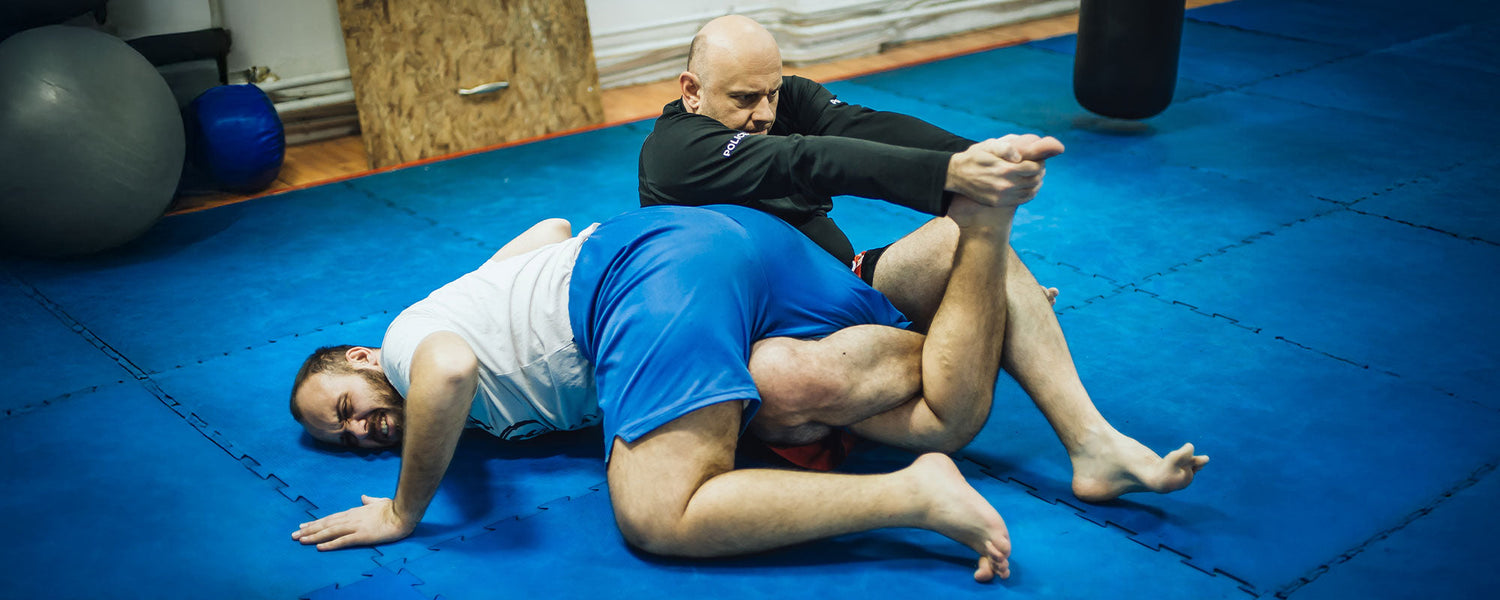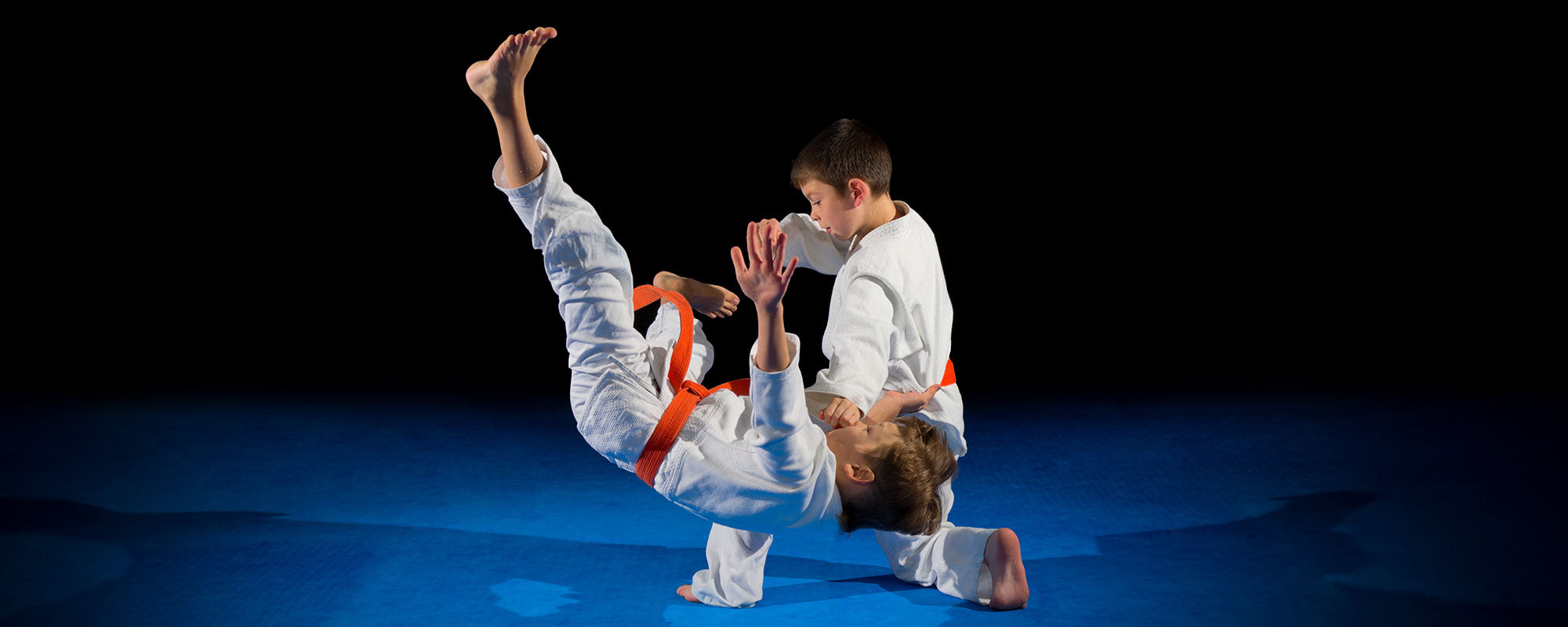Table of content
Putting opponents under a tremendous strain is what ensures successful submissions in Brazilian Jiu-Jitsu. Leg locks are one of a large number of BJJ moves that are used for this purpose. If you perform leg lock perfectly, you can easily put your opponent under enough strain that they will tap you to accept their defeat.
Though there are escaping techniques from leg locks as well, they are considered the most effective way to go for submitting opponents. However, inappropriate execution of this technique can result in severe BJJ injuries like torn ligaments and hyperextended joints.
1. What are Leg Locks in BJJ?

Leg lock is a form of submission that is based on putting strain on lower body joints and muscles with the purpose of causing enough pain for the opponents to make them tap and accept their defeat. Knees and ankles are the most common targets in leg lock submissions.
Big names like Gordon Ryan and Craig Jones are known as leg lock specialists in EBI, Polaris, and ADCC events. In these events, leg locks are known for their game-changing capabilities. Submissions based on leg locks mostly result in taps by the opponents.
2. Why Are Leg Locks Popular?
The effectiveness in submitting opponents in high-profile jiu-jitsu fights is making leg locks popular around the world. If we talk about the people behind the success of this technique in BJJ events and fights, Marcelo Garcia, Dean Lister, and John Danaher are the prominent names nowadays.
You might be a little surprised by knowing the fact that not too long ago, these leg locks were considered unworthy of getting the attention of BJJ athletes. But now you can find every BJJ school teaching their trainees these devastating leg locks to enable them to make the most out of their game.
Danaher’s Death Squad is one of the finest examples of getting specialty in leg locks. This small group of grapplers is experts in all kinds of leg locks learned from John Danaher. They win most matches by using these techniques to submit opponents successfully.
3. Possible Leg Lock Injuries
Though leg locks are exceptionally beneficial for submitting opponents during the actual fights and even in practice, they require care while training and executing them. Especially, kneebars and heel hooks are that target mostly knee area and affect surrounding ligaments. These ligaments include the anterior cruciate ligament, posterior cruciate ligament, medial cruciate ligament, and lateral collateral ligament.
These ligaments are more vulnerable to the risk of injury when you go for inside heel hooks or standard heel hooks. The meniscus is a cartilage, which acts as a shock absorber between the knee joints, can also get damaged due to applying uncontrolled rotational power to the knee. That is why heel hooks are quite riskier than other ankle locks and toe holds.
To avoid such troubles during sparring, ensure to make your partner aware of tapping when they start feeling pressure on their joints and ligaments, even if they do not feel pain.
4. Worthwhile Leg Locks In BJJ
There are multiple types of leg locks used in BJJ competitions following the ruleset of IBJJF, ADCC, and other jiu-jitsu bodies around the world. However, here, we are going to discuss some of the most effective leg lock techniques that have proved their worth in modern-day BJJ practices.
4.1. Kneebar
Kneebar is one of the few techniques that are used by all kinds of grapplers. This is a must-have technique for a BJJ grappler for leg lock attacking as this is quite effective for submitting opponents as well as easy to administer. Knee bars are like arm bars but they are performed with legs.
To go for a knee bar, it is essential to create a fulcrum of your body and opponent’s leg. Now grab the leg of your opponent to overextend it at the knee. To be able to do so, there are multiple ways to get into the position.
Going from the knee shield position while being in half guard is one of the best ways. To use this position for the knee bar, you just need to put your arm under your adversary's shin over their thigh. Then step over the opponent's torso while rotating your body to take his leg in your control. If you can get into this position properly, you can perform a knee bar easily to submit your opponents.
It has been witnessed that many BJJ athletes do not care about their legs and defending the upper body is their only priority. Legs are the most welcoming body part for a grappler who loves to go for leg locks. For instance, if you are combatting with a grappler who is more focused on his upper body defense, you should go for his legs and place a knee bar to make him tap out.
4.2. Heel Hook
The heel hook is another important and devastating leg lock that locks ankles and knees. In most BJJ systems, heel hook is not taught to trainees unless they reach brown belt level and experts of other leg locks. Because, if a grappler performs it to the bitter ends, it can result in fracturing the opponent's leg.
To perform it, you only need to take the opponent's leg and put your elbow under the opponent's heel. Grab your one hand with the other for twisting their heels. The outside heel hook is also known as the knee reaping that is prohibited in all major BJJ competitions.
While performing this leg lock you must be careful about the amount of force you use for twisting the opponent's knee. This should be enough to make the opponent tap out but not excessive enough that it ends up with knee fractures or other severe injuries.
In case, any opponent finds the opportunity to apply a heel hook to you, the best way is to tap out when you feel pressure on your joint before you get any serious ligament or joint injury.
4.3. Achilles Lock or Ankle Lock
One of the first legs locks that a beginner BJJ practitioner learns is a straight ankle lock. A newbie can easily perform this leg lock as this is quite easy to administer.
Like all other leg locks, this also requires you to get the opponent's leg. Once you get control of your opponent's leg, shove it under your armpit. Now put your inside foot under the opponent's thigh and your outside foot on their hips. After that, grab one hand with the other while putting your outside forearm underneath the opponent's ankle. If you get into that position, a little squeeze will be enough to make the opponent accept defeat by tapping out.
4.4. Calf Crush
Calf crush or slicer is not a commonly used leg locking technique like others but is used when the opponent reacts over other leg locks and provides the opportunity for it. This leg lock is usually administered when the opponent tries to escape from the first leg lock you attempted.
Athletes with stronger calves and higher levels of withstanding pain usually do not tap out on calf slicers easily.
However, this technique requires you to bring your shin in the opponent's crook of the knee and pull the leg back to their buttock. This will cause enough pressure on the calf joints to force the opponent to tap out. Improper use of this technique can end up with tearing apart calf muscles. Therefore, before using it in your fights, practice enough with your trainer and sparring partner that you do not do any harm to your opponent.
4.5. Toe Hold
Like the kneebar, toe hold is another one of the most commonly used leg lock techniques which are just allowed to brown and black belt divisions of BJJ. This technique is much like the ankle lock technique but in this, plantar flexion is applied to the opponent’s ankle. Almost, the same ligaments are attacked as in ankle lock.
To apply this leg lock, you have to grab the opponent's leg and rotate their fingers. Then slide your free hand under the foot and grab your forearm. After that shove your opponent’s foot towards their butt for maximum leverage.
Here one thing is worth noting, this leg lock can be much dangerous if applied improperly or extend beyond the motion limits. It can ruin an opponent's foot and knee.
5. Takeaway
These leg locks are outstanding when it comes to making opponents tap out and accepting their defeats but there are certain rules and regulations set by the respective authorities and BJJ bodies that must be followed.
Though they are beneficial in submitting opponents successfully, there is a great need to use them in a proper way so your opponent should not get any severe injury. This is also applicable to training partners. If you see that you are facing troubles with these leg locks, ask your instructor for help before using them in fights and causing any serious harm to adversaries.
Photo Credit: grapplingschool













Leave a comment
This site is protected by hCaptcha and the hCaptcha Privacy Policy and Terms of Service apply.